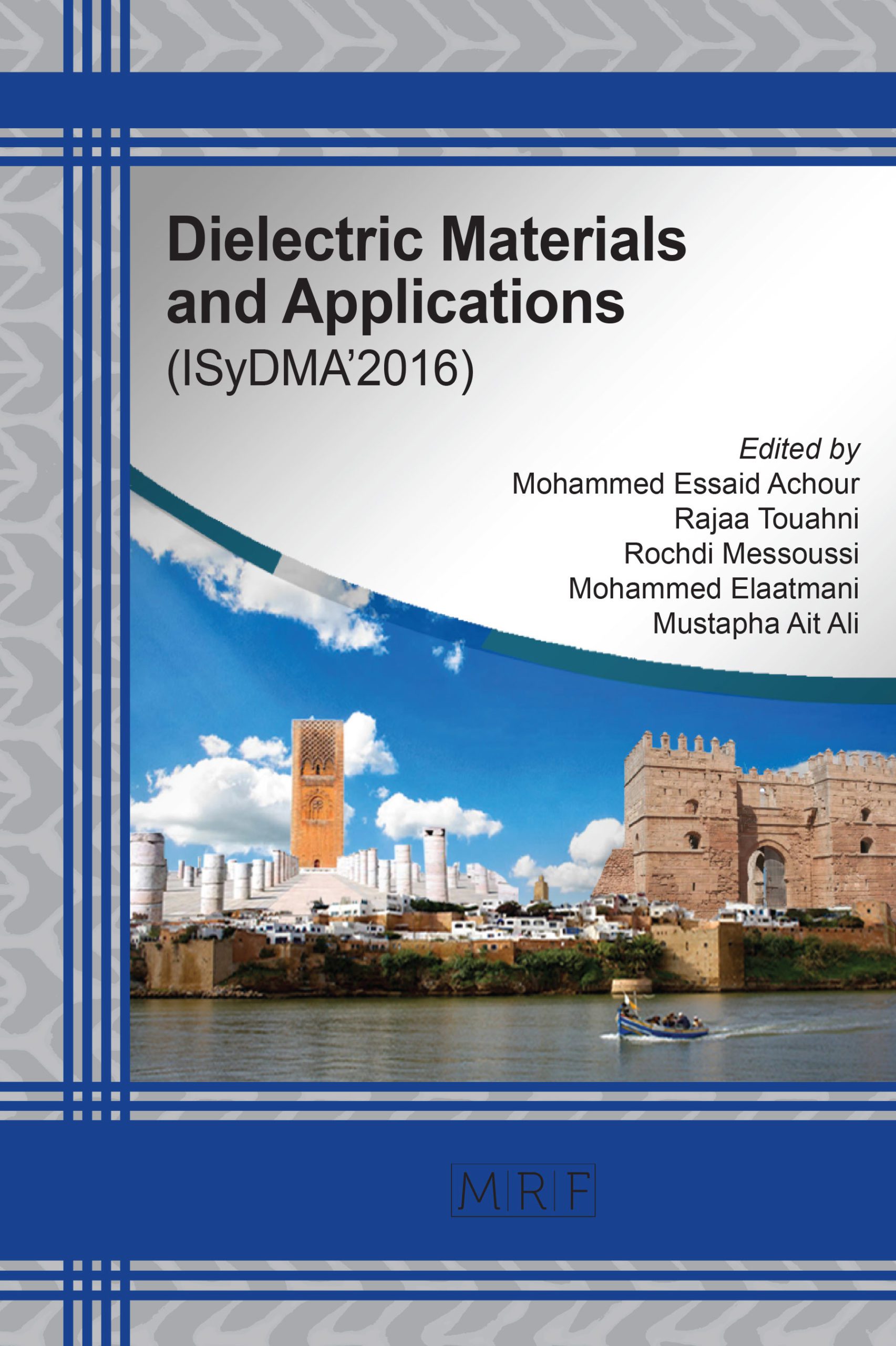I. BOUKNAITIR, N. ARIBOU, S.A.E. KASSIM, M.E. ACHOUR, L.C. COSTA
Abstract. In this study, the specific heat Cp formed by PMMA with different concentrations of PPy are measured. The specific heat is measured by using differential scanning calorimetry method (DSC). We notice that in this nano-composite (PMMA/PPy) our sample containing 2 – 8 wt% of PPy filler material. For modelisation, we have used the mixture law for thermal properties. As the results show, we have obtained a good agreement between the thermal properties.
Keywords
Specific Heat Capacity, DSC, Polypyrrole, Polymethymethacrylate, Composite, Conducting Polymer
Published online 12/10/2016, 4 pages
Copyright © 2016 by the author(s)
Published under license by Materials Research Forum LLC., Millersville PA, USA
Citation: I. BOUKNAITIR, N. ARIBOU, S.A.E. KASSIM, M.E. ACHOUR, L.C. COSTA, ‘Evaluation of thermal characterization of PMMA/PPy composite materials’, Materials Research Proceedings, Vol. 1, pp 175-178, 2016
DOI: http://dx.doi.org/10.21741/9781945291197-44
The article was published as article 44 of the book Dielectric Materials and Applications
References
[1] J.C. Garland, D.B. Tanner, Electrical transport and optical properties in inho- mogeneous media, in: AIP Conference Proceedings 40, American Institute of Physics, New York, 1977.
[2] S. Torquato, Random Heterogeneous Materials: Microstructure and Macro- scopic Properties, Springer-Verlag, New York, 2002. http://dx.doi.org/10.1007/978-1-4757-6355-3
[3] A.H.Sihvola,ElectromagneticMixingFormulasandApplications,Institutionof Electrical Engineers, London, 1999.
[4] M.E. Achour, Electromagnetic properties of carbon black filled epoxy polymer composites, in: C. Brosseau (Ed.), Prospects in Filled Polymers Engineering: Mesostructure, Elasticity Network, and Macroscopic Properties, Transworld Research Network, Kerala, 2008, pp. 129-174.
[5] J. Belattar, M.P.F. Graça, L.C. Costa, M.E. Achour, C. Brosseau, J. Appl. Phys. 107 (2010) 124111-124116. http://dx.doi.org/10.1063/1.3452366
[6] L.C. Costa, F. Henry, M.A. Valente, S.K. Mendiratta, A.S. Sombra, Eur. Polym. J. 38 (2002) 1495-1499. http://dx.doi.org/10.1016/S0014-3057(02)00044-7
[7] L. Flandin, T. Prasse, R. Schueler, W. Bauhofer, K. Schulte, J.Y. Cavaillé, Phys. Rev. B 59 (1999) 14349-14355. http://dx.doi.org/10.1103/PhysRevB.59.14349
[8] M.T. Connor, S. Roy, T.A. .Ezquerra, F.J.B. .Calleja, Phys. Rev. B 57 (1998) 2286-2294. http://dx.doi.org/10.1103/PhysRevB.57.2286
[9] M. El Hasnaoui, A. Triki, M.P.F. Graça, M.E. Achour, L.C. Costa, M. Arous, J. Non-Cryst. Solids 358 (2012) 2810-2815. http://dx.doi.org/10.1016/j.jnoncrysol.2012.07.008
[10] F. Henry, L.C. Costa, Phys. B: Condens. Matter. B 387 (2007) 250-258. http://dx.doi.org/10.1016/j.physb.2006.04.041
[11] I. Tavman , Y. Aydogdu , M. Kök , A. Turgut , A. Ezan. “ Measurement of heat capacity and thermal conductivity of HDPE/expanded graphite nanocomposites by differential scanning calorimetry,”Archives of materials science and engineering, vol 50, pp. 56-60, July 2011.
[12] A. Belhadj Mohamed, J. L. Miane, H. Zangar. Polym. Int. 50, 773 (2001). http://dx.doi.org/10.1002/pi.686
[13] N. Aribou, A. Elmansouri, M. E. Achour, L. C. Costa, A. Belhadj Mohamed, A. Oueriagli, A. Outzourhit. Spectro. Lett. 45, 477 (2012). http://dx.doi.org/10.1080/00387010.2012.667035
[14] T. Chelidze,. Y.Gueguen. Pressure – induced percolation transitions in composites. J. Phys. D: Applied Phys. 1998. v.31. _ PP. 2877_2885.
[15] T. Chelidze,. Y.Gueguen. Electrical spectroscopy of porous rocks: a review – I. Theoretical models // Geophys. J. Int. 1999. Vol. 137. PP. 1 – 15.































